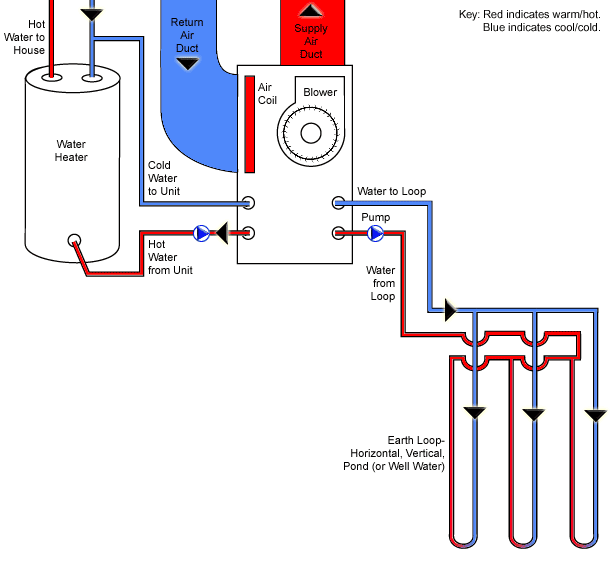The Geothermal Unit operates in a reverse cycle in the Heating Mode. The Heat Pump uses the indoor coil as an condenser and the outdoor coil as an evaporator in the Heating Mode. The reversing valve is energized or de-energized based on the manufacturers specification to direct the flow of refrigerant to the appropriate coils. Whenever the outdoor coil, or evaporator section in the Heating Mode, detects ice formed on the coil, blockage of air through the coil, or senses a temperature usually around 42 degrees Fahrenheit or below - the Heat Pump will switch into Defrost Mode every 30, 60, or 90 minutes based on the settings on the Defrost Board. In the Defrost Mode - the Geothermal Unit will reverse cycle which will allow hot gas to enter the outdoor coil and defrost the coil. This will also make the indoor coil become cold and in turn to offset this temperature - the electric heat strips or auxiliary heat will come on. Also, the outdoor fan motor will stop during the Defrost Mode.

Operation of a GeoThermal Unit in Heating Mode